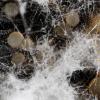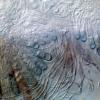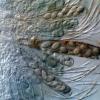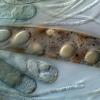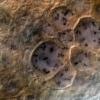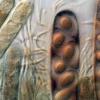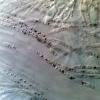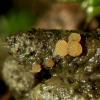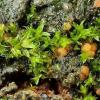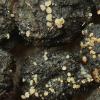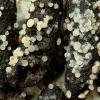
02-12-2025 18:59
This pair of ascos 2.5cm across were on recently b

02-12-2025 19:25
Buckwheat PeteHello, can anyone identify this hairy fungus growi

30-11-2025 12:53
 Edvin Johannesen
Edvin Johannesen
White short-stipitate apothecia found on thin twig

30-11-2025 10:47
 William Slosse
William Slosse
I recently found a collection of small Peziza sp.

27-11-2025 12:01
Thomas Læssøehttps://svampe.databasen.org/observations/10496727

27-11-2025 11:46
Thomas Læssøehttps://svampe.databasen.org/observations/10493918

17-09-2025 10:50
Heather MerryleesHi there!I am hoping for any advice on the identif

29-11-2025 08:40
 Andreas Millinger
Andreas Millinger
Hello,on a splintered part of a branch on the grou
Goose dung disco
Chris Yeates,
02-05-2021 23:01

Bonsoir tous
This fungus has appeared on the incubated dung of canada goose Branta canadensis collected by a canal 2½ weeks ago.
Perhaps because the dung was too wet a hyphal mat covered the droppings, but when a portion of this was carefully removed it revealed numerous pale yellow apothecia up to 750µm diameter.
Before a more detailed study I would welcome suggestions as to what to look for or suggestions of a genus. The apothecia are operculate, 8-spored and reacted strongly in Baralsche Löhsung as can be seen in the photographs. The reaction went from clear blue in young asci to an interesting phenomenon in older ones. Inside the asci, many of the paraphyses and inside the larger excipular cells small deep purple granules were deposited.
I need to make sure that the spores are mature before I make comments on size and ornamentation (if any). In photograph #6 the sheaths surrounding the entire spores can be seen, finally filling the whole asci - when this filling the asci occurs does this imply ascal maturity - i.e. the turgidity which causes spore ejection?
Cordialement, Chris
Peter Püwert,
02-05-2021 23:22
Re : Goose dung disco
Hi, this could be Iodophanus.
Regards Peter.
Hans-Otto Baral,
03-05-2021 07:37

Re : Goose dung disco
You could compare the KOH-pretreated iodine reaction which is probably permanently blue. The wall reaction looks like hemiamyloid. The red granules is another phenomenon which may occur also in Helotiales.
Chris Yeates,
03-05-2021 14:46

Re : Goose dung disco
Thank you Pieter & Zotto
Of course I should have thought of Iodophanus - always think of the most obvious candidate! The pale ascomata are probably down to restricted light under the hyphal mat. I'll await mature spores and do what Zotto suggests.
Chris
Peter Püwert,
04-05-2021 02:14
Chris Yeates,
10-05-2021 19:39

Re : Goose dung disco
Bonsoir tous
Of course my lesson should be "wait until the spores have ripened!" The fungus has matured to produced a splendid display of hundreds of apothecia of Ascobolus brantophilus - I'll post images in due course.
Chris
